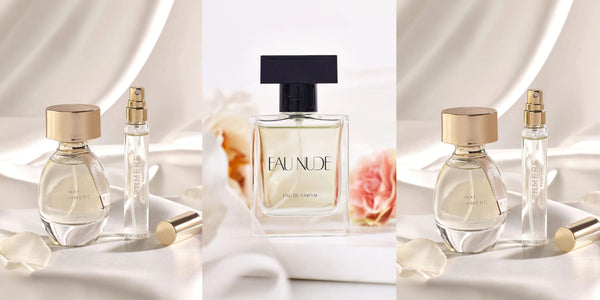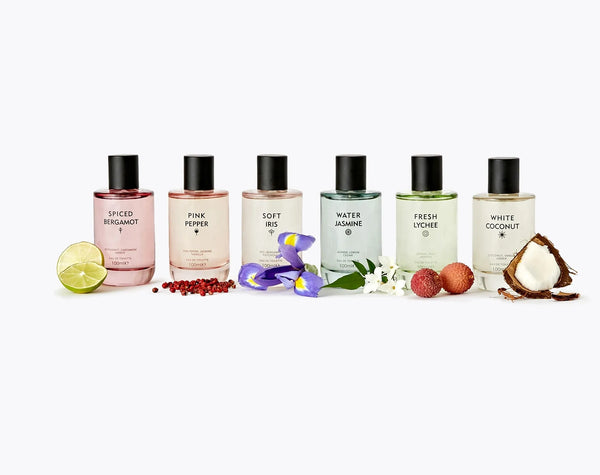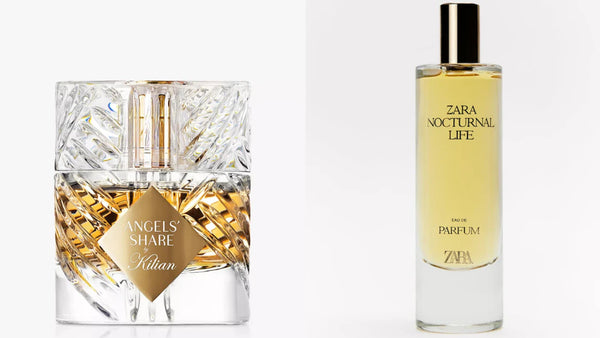Common Ingredients Used In Perfumes

Perfumes, those alluring concoctions that can evoke a myriad of emotions and memories, are an indispensable accessory for many. The art of creating the perfect aroma is centred around a carefully balanced union of several key ingredients. But what are these mystical ingredients that lend your favourite scent its unique charm? In this blog post, we will delve into the world of perfumery, unraveling the secrets of common ingredients used in perfumes. Whether you have a penchant for floral notes, a proclivity for the woody ones, or a fervour for the fruity scents, this dose of ‘olfactory’ wisdom will surely pique your curiosity.
1) Amber

Amber is one of the most commonly used ingredients in perfumes, and has a sweet, warm and woody scent. It is often described as being reminiscent of incense or burning wood, and is a popular choice for both men's and women's fragrances. As a base note, amber has a long-lasting scent that can help to balance out the other notes in a fragrance.
Amber is derived from fossilised tree resin, which gives it its characteristic woody aroma. It is commonly blended with other ingredients such as musk, vanilla, or citrus to create an even richer and more complex scent. The most popular use of amber in perfumes is as a base note, which helps to anchor the other fragrances in the scent and give it a longer lasting aroma.
Amber is a versatile ingredient which can be used in a range of different fragrances. It has a strong and distinctive scent which is sure to add depth and complexity to any perfume. Whether you're looking for a classic woody aroma or a more modern and unique scent, amber is sure to be an ingredient that will add depth and character to your fragrance.
2) Ambergris

Ambergris is a wax-like substance derived from the digestive system of sperm whales, and has been used in perfumery since the 16th century. It has a sweet, earthy scent and is highly valued for its ability to fix other scent molecules and make them last longer. As a result, it is often used in high-end perfumes, and can be found in many different types of fragrances, such as chypres, orientals, and fougeres. Ambergris has a unique, musky scent that can add depth and complexity to a fragrance, making it an essential ingredient in many perfumes.
3) Vetiver

Moving on from ambergris, another key ingredient in perfume-making is Vetiver. Native to India, Vetiver is a resilient grass type celebrated for its complex, earthy scent and cooling abilities. Most popular in male fragrances, Vetiver offers a deep, woody aroma, with smoky and earthy undertones, which often serves as the base note in perfumes. This aromatic grass is known for its longevity and versatile blending characteristics, which harmonise well with a variety of aromatic profiles. Besides its scent, Vetiver also has a reputation for its soothing and calming properties, making it not only a favourable ingredient in perfumery but also in aromatherapy products. So, whenever you encounter a fragrance with a lingering, earthy note, it's likely the magical touch of Vetiver.
4) Bergamot

Bergamot" is yet another popular ingredient that is widely used in the perfume industry. Hailing from the beautiful citrus family, bergamot imparts a distinctly vibrant, citrusy, and slightly floral note to perfumes. Owing to its freshness, it is frequently found in the top notes of many high-end fragrances. Additionally, bergamot is known not just for its ravishing aroma but also for its calming and uplifting properties. If you've ever enjoyed an Earl Grey tea, then you've experienced the delightful scent that bergamot brings to the mix. This ingredient's unique properties make it a valuable addition to any perfume formulation, contributing to the overall complexity and allure of the scent.
5) Cypress

Following on from our exploration of the unique citrusy notes of Bergamot, let’s delve into the fascinating world of Cypress. Renowned for its fresh and woody scent, Cypress has been a prevalent ingredient in perfume mixing for centuries. Hailing from the Mediterranean region, the evergreen cypress tree provides a rich, balsamic fragrance with undertones of spice and tangy lemon, making it a premium selection for perfume makers. Whether as a primary note or supporting role, Cypress offers a long-lasting, versatile scent that promotes a sense of calm and tranquility. Its ability to blend seamlessly with other fragrant profiles brings a multidimensional depth and complexity, raising the overall aroma profile of the perfume. When shopping for your next fragrance, consider a perfume with Cypress for a robust and invigorating scent experience.
6) Oud

Following the distinctive aroma of cypress, we now delve into the exotic world of "Oud". Recognised as one of the most expensive and sought-after ingredients in perfumery, Oud, also known as "liquid gold", originates from the Agar tree found primarily in Southeast Asia. When this tree is infected by a specific type of mould, it reacts by producing a dark and fragrant resin, which is the Oud. It is admired for its warm, woody scent, often described as being smoky, balsamic, and slightly animalistic. This complex fragrance profile makes Oud a favourite among perfumers, adding richness and depth to any fragrance. As a key note, Oud adds an exotic and luxurious touch to perfumes, making them a consistent favourite across both niche and mainstream fragrances.
7) Sandal Wood

Moreover, another frequently used ingredient in perfumes is Sandalwood. Renowned for its soft, warm, and creamy aroma, sandalwood adds a profound and long-lasting base note to various fragrances. Its exotic scent, derived from the heartwood of the sandalwood tree, has been cherished in perfumery for centuries. The woody yet sweet character of sandalwood blends seamlessly with other elements, creating a harmonious balance that enhances the overall aroma. Its enduring scent profile makes it a popular choice for luxurious, high-end perfumes and contributes to their premium appeal. Furthermore, its soothing properties can trigger a sense of serenity, much sought after in the realm of personal fragrances.
8) Jasmine

In the fascinating world of perfumery, alongside sandalwood, another popular ingredient used is Jasmine. This fragrant flower, synonymous with elegance and sophistication, infuses an intoxicating allure to a multitude of perfume compositions. Adored not just for its captivating floral scent, jasmine also holds an opulent sweetness that makes it a beloved heart note in perfume design. The aromatic oils extracted from the small white blossoms are full of complex undertones, facilitating a diverse olfactory experience. When blended with other aromatics, jasmine's scent complements without overpowering, facilitating the creation of distinctive fragrances. The precious nature and unique qualities of jasmine contribute to its ubiquitous presence in high-quality, luxury perfumes. Moreover, its calming and uplifting characteristics align with the increasing demand for personal fragrances that cultivate feelings of tranquility and positivity. The enduring popularity of Jasmine solidifies its status as a staple ingredient in the perfume industry.
Conclusion
In conclusion, the art of perfumery is a delicate and intricate craft, abounding with a myriad of diverse ingredients that lend perfume its enigmatic allure. Frequently utilised ingredients such as musk and ambergris introduce a potent depth and longevity to fragrances, while florals like jasmine and lavender contribute a romantic and ethereal lightness. Citrus notes like bergamot bring a crisp freshness that invigorates, and exotic elements such as oud add an enthralling complexity. Encompassing these elements within their manifold combinations and varying concentrations is indeed the vital essence of a perfume’s distinctive character. This knowledge can provide a beneficial guidance when choosing a personalised scent. With a myriad of possibilities unravelling with each comprehensive understanding of perfume ingredients, the poetic language of scents becomes lucid, serving as a profound form of expression.




